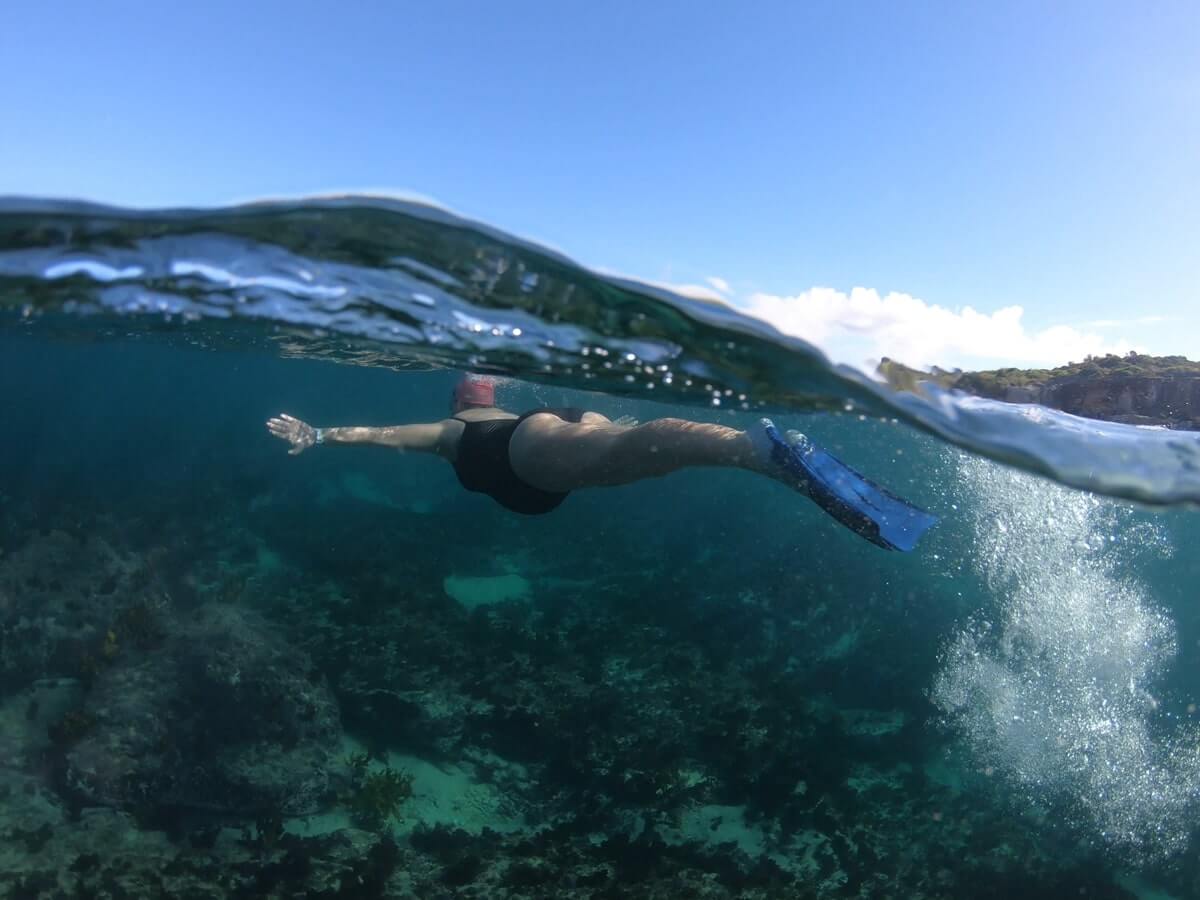Different strokes for different folks

“Should I be using a different swimming technique in open water?”
That was a question I had sent to me this week (thanks to David), and it’s a common one.
The simple answer is no, as much as possible your technique should remain the same as your technique in the pool (assuming you have an efficient technique in the first place – if not, get it looked at).
There are, however, some slight variations you can make to adjust to the open water when waves, wind chop and swimmer wash make the water surface bumpier.
Stay streamlined
The most common mistake swimmers will make in transferring to the open water, is swimming with their heads up. This leads to the legs sinking, which creates more drag and requires more energy.
The key is to maintain a streamlined body position and use sighting to see where you’re going. Sighting is still inefficient, even when performed perfectly, so try to only bring your eyes to the surface of the water to stay as streamlined as possible.
Recovery phase
When the water surface is choppy, you may need to be mindful of your hands during the recovery phase. If your hands tend to stay close to the water surface during your recovery (especially if you have a high elbow recovery), this will cause resistance as your hands hit the chop, and it will also lead to disruption in your rhythm and momentum.
To avoid this happening when it’s choppy, switch to a higher hand recovery, to the point where you may transition to a swinging arm style recovery, (see Swim Smooth’s The Swinger swim type) where the arms swing out and away from the body before returning in front of the shoulders for the catch phase.
Even plane
Still, with the chop, you don’t want to be swimming up and down the bumps – technically it’ll make your swim longer, plus it’s hard to get in a smooth rhythm, and it uses up a lot more energy.
The idea is to neutralise the peaks and troughs as much as possible by slicing through the peaks and swimming as much as possible on an even plane. Again, it’s important to keep your head down in a neutral position and start to ‘feel the water’, so you know when to glide a little longer on some strokes, and dip under the higher/peakier chop.
These tips will help you swim more efficiently in open water, but they will take time to learn and to become second nature, so get out and practice as much as possible in the kind of conditions you probably avoid.
First published February 2018




Thanks Andre been pool swimming nearly every doy for 30 years and just doing more Ocean swims so these transition tips are good.
I Bilateral in the pool and find an advantage when cross swell so can transition to one side i.e the swell side to view and opposite when wind and chop to get aclear breath.
Tx Hugh